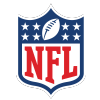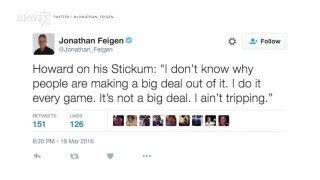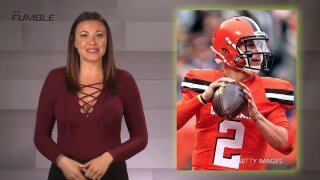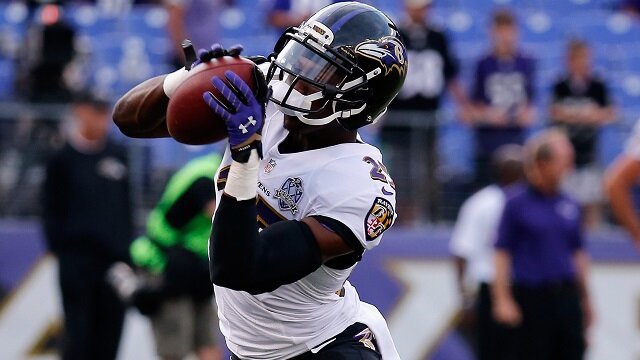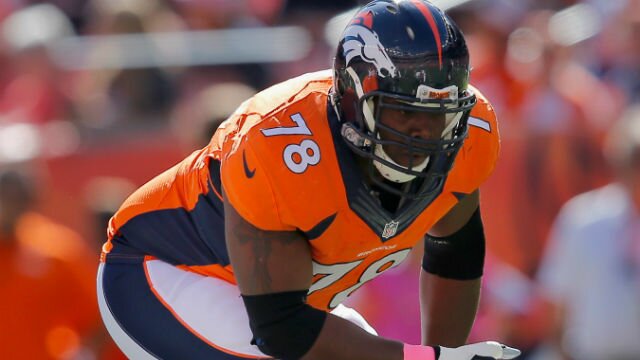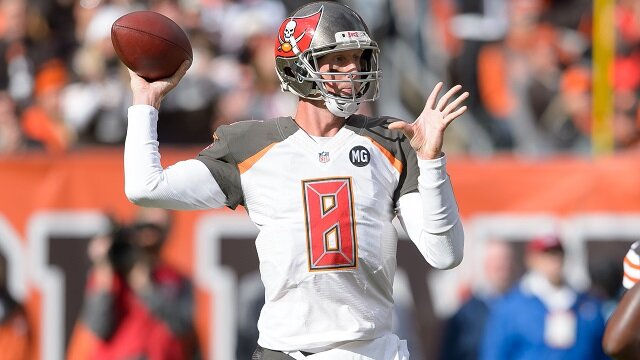
Are there any franchise quarterbacks in this year’s draft?

The quarterbacks in this draft class share one common trait, none of them are ready to be starters come week one of the NFL season. They all will need time to sit, develop and learn their respective team’s offense system. Kirk Cousins, of the Washington Redskins showed that with time and patience, teams can actually develop a talented starting quarterback in this league.
There are a number of statistical factors that go into the rankings, from wins as a starter, completion percentage, third down completion percentage, each quarterbacks average snap-to-pass time, to sacks and interceptions. All these and numerous other statistical categories and rankings make up the statistical formula used to rank and evaluate each of the quarterbacks in this draft class.
Below are the rankings and reviews of the top quarterbacks in this year’s draft class, along with each quarterback’s projections.
1) Connor Cook (QB, Michigan State):
At 6’4” and 217 pounds, Cook has what most NFL teams are looking for. Though he didn’t have the most dynamic receiving corps, 12 percent of his completed passes went for 25 or more yards, which is the third highest rate amongst draft eligible quarterbacks in this year’s draft class. He isn’t afraid to go deep and stretch the field.
Cook doesn’t make a lot of mistakes; he is quick to get the ball out of his hands and against Michigan in 2015, he had an average snap-to-pass time of 2.29 seconds. This shows up with the fact that he was only sacked 46 times throughout his career, a sack rate of 3.9 percent or once every 25.4 pass attempts.
Cook isn’t ready to start right away, but with time and the right coaching staff, he can develop into a bonafide number one starter in this league. If a team has the patience to work with Cook and develop him properly, they could be rewarded with a future top tier starting quarterback.
Projections based on 50,000 simulations of the 2016 season as a starter played against an average schedule and on an average team.
Projection: 508 attempts, 286 completions, 3,490 passing yards, 20 touchdowns, 15 interceptions
2) Carson Wentz (QB, North Dakota State):

Wentz has everything that most NFL teams are looking for with his size and stature. Standing 6’5” and 237 pounds, he impressed scouts with his performance at the NFL Combine, testing in the top half at almost every single drill.
One area that Wentz really excelled at was in pressure situations; on third down he had a career completion percentage of 61.3 percent. A mobile quarterback, Wentz was able to escape from pressure and was sacked a total of 30 times for his career, giving him a sack rate of five percent, or once every 19.9 pass attempts.
He often predetermines his target pre-snap as he tends to go to his first read rather than look off a safety or go through his progression. Overall, he reminds me of a young Colin Kaepernick, a player who has the physical skill set, but remains a work in progress in terms of his mechanics and mastery of the NFL passing game.
Projection: 498 attempts, 290 completions, 3,562 passing yards, 21 touchdowns, 16 interceptions
3) Jared Goff (QB, California):

In college he had 36 career starts, yet only led his team to 14 career wins, a .388 winning percentage. The only other current NFL starting quarterback with over 30 career college starts with a similar career win percentage total is Jay Cutler, who had 11 wins at Vanderbilt as a four year starter.
He had a 60.3 third down completion percentage, a third down variance of -2.6 percent, which puts him in the top four amongst quarterbacks for this year’s draft class.
Goff finished his career with 12,180 passing yards, 96 TD, 30 INT, a 3.2 TD/INT, and a 62.2 percent completion percentage. Playing an Air-Raid style offense (think spread offense on hyper-speed), Goff was in his element getting to the line of scrimmage and throwing it around the field.
Goff will need time to develop and learn an NFL style offense before he is ready to become an NFL starter. If he has a chance to sit and learn, he could develop into the next Matt Hasselbeck.
Projection: 539 attempts, 315 completions, 3,851 passing yards, 23 touchdowns, 17 interceptions
4) Paxton Lynch (QB, Memphis):

There are not a lot of quarterbacks in NFL history who stand 6’7”. Those who have tried didn’t possess the mobility and athleticism of Paxton Lynch. Lynch is a mobile quarterback who has the wheels to scramble and extend plays with his feet. It’s his arm strength that make scouts drool over his potential.
Though he is a big target standing in the backfield, Lynch was only sacked 57 times, giving him a sack rate of just 4.7 percent of the time, or once every 21.1 pass attempts. He had the fifth lowest negative play rate of any quarterback in the draft class at 6.6 percent of his drop back attempts.
For his career, Lynch had a 57.6 completion percentage on third down and a -6.8 percent third down variance.
With the recent success of Brock Osweiler and Cam Newton, NFL teams are a little less wary of selecting bigger-framed quarterbacks. Lynch has a solid foundation on which to build. He is one of the more exciting and intriguing quarterback draft prospects to come along in a long time.
Projection: 510 attempts, 299 completions, 3,551 passing yards, 19 touchdowns, 14 interceptions
5) Dak Prescott (QB, Mississippi State):
.jpg)
Dak Prescott is a dual-threat quarterback who showed he can jet past pass rushers or rifle the ball down field for a big gain. Prescott played in the same system and under the same tutelage as Tim Tebow.
At 6’2” and 226 pounds, Prescott is a quick-footed, smooth runner that is capable of scrambling for a first down or using his legs to evade pressure and get outside the pocket. He had over 2,500 rushing yards and 41 rushing touchdowns for his career.
In 2015, he had a third down completion rate of 59 percent and for his career he had a 57.6 percent completion percentage on third down. His third down variance for his career was -6.8 percent, similar to that of Ryan Tannehill and Kirk Cousins.
Projection: 532 attempts, 304 completions, 3,598 passing yards, 20 touchdowns, 15 interceptions
6) Cody Kessler (QB, USC):

At 6’1” and 220 pounds, Kessler isn’t the big, strong pocket passer that typically personifies what NFL scouts are looking for. His quick release and solid footwork in his mechanics makes up for what he lacks in physical stature.
With 41 career starts, Kessler has a depth of knowledge at the quarterback position which few players in this class can compete with. He finished his career throwing for 10,338 yards, an 8.2 YPA average, 88 TD, 19 INT, and a 4.63 TD/INT ratio, the highest ratio in this year’s quarterback class.
He excelled in third down situations in college, completing 64.5 percent of passes. He had a third down variance of just -2.4 percent, the lowest amongst draft eligible quarterbacks in this draft class.
He is suited for the short to intermediate passes. Given time and the right system, I see Kessler as a possible mid-round steal in this year’s draft.
Projection: 511 attempts, 295 completions, 3,459 passing yards, 20 touchdowns, 14 interceptions
7) Cardale Jones (QB, Ohio State):

Jones is a raw talent, who has the arm strength to stretch defenses and push the ball down the field. At 6’5” and 253 pounds, he is a larger quarterback who can make throws with defenders hanging onto to him.
One aspect of Jones’ game is his ability to pick up first downs with his legs or stand in the pocket and deliver the deep ball. 17 percent of his completions resulted in pass plays of 25 or more yards, the highest rate in this draft class. Jones had the second highest yards-per-completion average of 13.9 yards is the second highest of all the draft eligible quarterbacks in this class.
Jones will need to work on developing better footwork in the pocket along with holding onto the ball with two hands while evading pass rushers. He had a total of 11 career fumbles, finishing his career with a 9.3 percent negative play rate.
Jones is the perfect fit to sit behind Carson Palmer and learn from Bruce Arians who enjoys throwing the ball downfield more than any other coach currently in the NFL.
Projection: 495 attempts, 282 completions, 3,459 passing yards, 18 touchdowns, 17 interceptions
8) Kevin Hogan (QB, Stanford):

Hogan had some big shoes to fill, taking over the starting spot after Andrew Luck jumped to the NFL. Hogan was a three year starter, wining 36 career games, throwing for 9,390 yards, 75 TDs, 29 INT, a TD/INT ratio of 2.59, and a career completion percentage of 65.9 percent.
There are a few red flags to Hogan’s game when looking into his efficiency metrics. He takes a higher than average number of sacks at a rate of one sack every 16.7 pass attempts.
Hogan had the biggest variance between his third down completion percentage (56.6%) compared to his first and second down completion percentage average (69.7%), a 13.1 percent drop. The other quarterbacks who have been drafted in the last ten years with such a significant drop in third down variance are Blaine Gabbert (20.9%), Jimmy Clausen (17.6%), and EJ Manuel (13.4%).
He is physically prepared to be an NFL quarterback, but it will take some time before he is ready to take the reins and be the face of an NFL franchise.
Projection: 487 attempts, 282 completions, 3,500 passing yards, 21 touchdowns, 16 interceptions
9) Jake Rudock (QB, Michigan):

Sometimes a quarterback needs to find the right coach to show him how to properly play the position. Rudock was a great quarterback while at Iowa, but after some tutelage from Jim Harbaugh, he started to show significant signs of progress.
A consistent passer on each down, Rudock only had a 5.8 percent drop on his third down completion percentage, compared to his first and second down completion percentage average. For comparison, Andy Dalton had a -5.9 percent for his third down variance.
Rudock might not develop into a long term starting quarterback, but he has the statistical makeup of being a top level backup quarterback in the NFL. With a negative play rate of just seven percent, he won’t make a lot of mistakes and he will take care of the football.
Projection: 506 attempts, 286 completions, 3,324 passing yards, 18 touchdowns, 17 interceptions
10) Brandon Doughty (QB, Western Kentucky):

A three-year starter for the Hilltoppers, Doughty showed remarkable improvements each season throughout his career. He was 28-11 as a starter, throwing for 16,120 passing yards, more passing yards than any other draft eligible quarterback in this year’s draft.
One of Doughty’s more impressive statistical achievements is a 3.26 TD to INT ratio, showing a quarterback who takes care of the football and eliminates taking unnecessary risk.
He might not be considered a first or second day draft selection, but rather a development prospect who could shine in the right system. The Kansas City Chiefs would be a perfect fit for Doughty to learn and develop under a similar style quarterback in Alex Smith.
Projection: 470 attempts, 269 completions, 3,315 passing yards, 20 touchdowns, 15 interceptions
PredictionMachine.com is the leader in sports simulation. Its advanced statistical technology, the “Predictalator,” plays every game 50,000 times before it’s actually played to provide comprehensive and industry-leading player, team and game projections.


